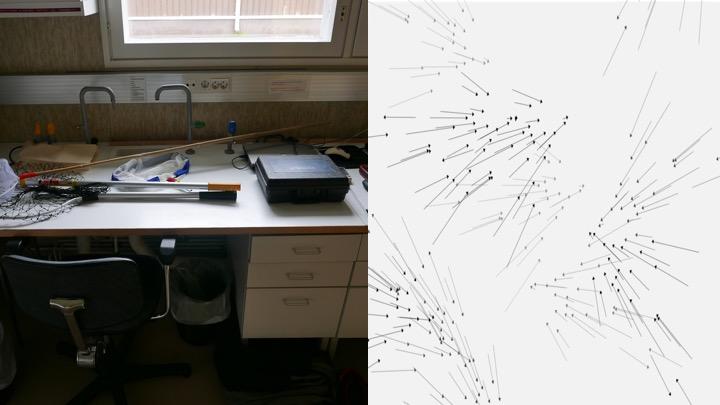Goldsmiths sociologists part of ‘Who are we?’ programme at Tate Exchange
Primary page content
Two members of the Department of Sociology at Goldsmiths, University of London have teamed up with leading artists as part of a new 'cross-platform' event launching next week at the Tate Exchange.

As part of Who Are We?, curated and produced by Tate Exchange Associates from 14-19 March 2017, Professor Evelyn Ruppert and programmer and interaction designer Dawid Górny present an installation called 'How do we know who we are'?
The installation is an experiment in visualising how people move about Europe. It begins with a visualisation of Europe composed out of government data on EU migration and selfies from social media. People visiting the installation are invited to take part in re-composing it by sharing their own data and then watching the visualisation of Europe being re-composed.
A related workshop will involve social science researchers from ARITHMUS (Baki Cakici, Francisca Grommé, Stephan Scheel, Ville Takala and Funda Ustek-Spilda) and several EU universities discussing how various data practices are part of the making and shaping of who are the people of Europe. Starting from the assumption that the answer to the question of Who Are We? is multiple, they will explore the significance of data practices to broader political questions about the future of Europe.
Evelyn Ruppert is participating in her role as Principle Investigator of a European Research Council (ERC) funded project, ARITHMUS (Peopling Europe: How data make a people). The installation is part of the project’s development of co-produced platforms for recomposing Europe through data.
Dr Jennifer Gabrys, who leads Citizen Sense, another ERC-funded project based at Goldsmiths, has teamed up with Finnish artist Antti Tenetz to create an installation or ‘participatory laboratory’ called 'Tracing, Tracing 2.0 and Citizen Sensing'.
Working with her team including Helen Pritchard and Lara Houston, Citizen Sense will develop a participatory laboratory to investigate how migrations are transforming in relation to environmental change and how organisms can also become bioindicators of these changes. The work asks: How might we understand movement and migration as a human and nonhuman activity? Are there new borders that emerge when nonhumans are taken into account?
As part of the laboratory, participants can work with and investigate Citizen Sense’s monitoring and sensing kits, as well as propose and document human-nonhuman migrations of their own.
On 16 March, a related Citizen Sense workshop and walk will explore the question, ‘Who Are We?’ through an investigation of human and nonhuman migrations and ways of tracing these movements, from London to the Arctic.
The workshop will especially focus on the movements of the European eel, a keystone organism that makes its migrations through the River Thames, across Europe, and to the Sargasso Sea. It will ask how events such as climate change are influencing nonhuman migrations, and will explore ways in which eel journeys are traced across multiple environments, and through citizen science activities.
Participants will also undertake a walk and exploration of the River Thames, and connect movements and tracings of eels with local culture and trade, as well as environmental histories and futures.
Tate Exchange is on the 5th floor of the new Switch House at Tate Modern.
For more information visit: www.whoareweproject.com; www.arithmus.eu; www.citizensense.net